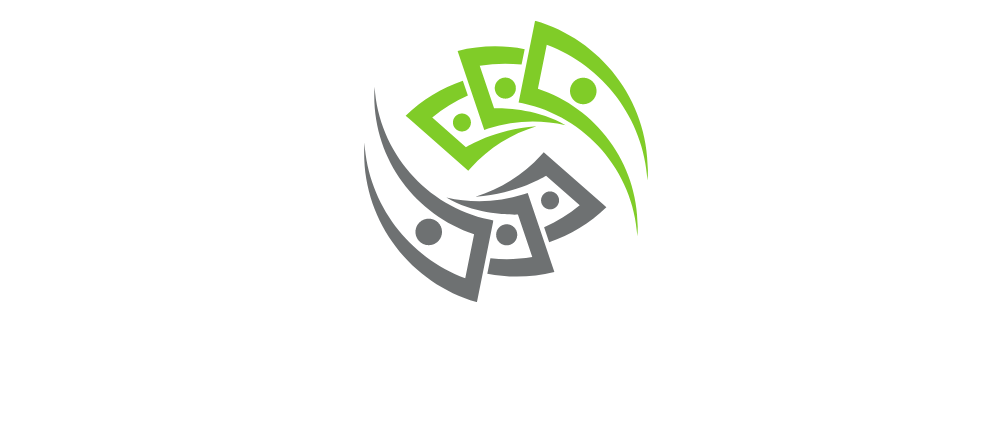Stablecoins Rise: BlackRock, JPMorgan & BUIDL in Digital Assets

Digital assets are reshaping the financial landscape, offering new opportunities and challenges for investors like you. As stablecoins gain traction, they provide a bridge between traditional finance and the cryptocurrency world, ensuring stability in an otherwise volatile market.
Major institutions such as BlackRock and JPMorgan are diving into digital assets, signaling a significant shift in how traditional banks and investment firms perceive and utilize cryptocurrency. Their involvement not only legitimizes the space but also introduces sophisticated financial strategies to the digital realm.
Meanwhile, the BUIDL movement emphasizes the importance of building and developing robust blockchain solutions. By understanding these key players and concepts, you’ll be better equipped to navigate the evolving world of digital assets and leverage their potential for your financial growth.
Key Takeaways
- Stablecoins Bridge Traditional Finance and Crypto: Provide stability and enable seamless digital transactions, mitigating market volatility.
- Major Institutions Embrace Digital Assets: BlackRock and JPMorgan’s involvement legitimizes cryptocurrencies and introduces sophisticated financial strategies.
- BUIDL Movement Drives Blockchain Innovation: Focuses on developing robust decentralized applications and enhancing blockchain infrastructure for sustainable growth.
- Future Trends Shape the Digital Asset Landscape: Interoperability, tokenization of real-world assets, and the rise of Web3 are key areas driving expansion.
- Regulatory Developments Enhance Market Stability: Clear frameworks by authorities like the SEC promote investor confidence and broader adoption of digital assets.
- Enhanced User Experience Facilitates Mainstream Adoption: Simplified interfaces and improved accessibility make digital assets more approachable for a wider audience.
Understanding Stablecoins
Stablecoins provide a bridge between traditional fiat currencies and the cryptocurrency market, offering stability in an otherwise volatile space. They enable seamless digital transactions and enhance the functionality of digital assets.
Types of Stablecoins
Stablecoins fall into three main categories based on their collateralization:
- Fiat-Collateralized Stablecoins
- Backed by traditional fiat currencies like USD or EUR.
- Maintained through reserves held by a central entity.
- Examples include Tether (USDT) and USD Coin (USDC).
- Crypto-Collateralized Stablecoins
- Secured by other cryptocurrencies.
- Utilize smart contracts on blockchain platforms to manage collateral.
- Examples include DAI and sUSD.
- Algorithmic (Non-Collateralized) Stablecoins
- Depend on algorithms and smart contracts to regulate supply.
- Maintain stability without physical or crypto collateral.
- Examples include Ampleforth (AMPL) and Terra (UST).
Use Cases and Benefits
Stablecoins offer numerous advantages across various applications:
-
Digital Payments
- Facilitate fast and low-cost transactions globally.
- Enhance interoperability in digital payment systems.
-
Financial Services
- Enable access to decentralized finance (DeFi) platforms.
- Support lending, borrowing, and earning interest on digital assets.
-
Cryptocurrency Exchanges
- Provide a stable medium for trading and settling transactions.
- Reduce exposure to cryptocurrency market volatility.
-
Tokenization
- Allow for the representation of real-world assets on blockchain.
- Simplify the process of asset transfer and ownership tracking.
- Offer a stable store of value for investors.
- Enhance portfolio diversification by including digital assets.
By integrating stablecoins into these areas, you can leverage the stability and efficiency they bring to the evolving landscape of digital assets.
Blackrock’s Involvement in Digital Assets

BlackRock has significantly expanded its presence in the digital asset space, integrating advanced financial strategies with blockchain technology.
Investment Strategies
BlackRock employs diverse investment strategies in digital assets. It offers exposure to cryptocurrencies through investment funds and crypto options. The firm emphasizes the tokenization of real-world assets, enhancing liquidity and accessibility. By leveraging blockchain, BlackRock provides clients access to decentralized financial products, aligning with the BUIDL movement to develop robust blockchain solutions.
Market Impact
BlackRock’s entry into digital assets influences the cryptocurrency market by introducing institutional-grade stability. Its investment in stablecoins bridges traditional fiat currencies and cryptocurrencies, facilitating seamless digital payments. Additionally, BlackRock’s adoption of blockchain technology promotes interoperability and enhances user experience in digital financial services. This involvement legitimizes digital assets, attracting more institutional investors and fostering market growth.
The BUIDL Movement
The BUIDL movement emphasizes building and developing robust blockchain solutions. It drives innovation and growth within the digital asset ecosystem.
Origins and Philosophy
BUIDL originated from the Bitcoin community’s mantra “HODL,” transforming it to encourage active participation. The philosophy centers on creating decentralized applications and enhancing blockchain infrastructure. By prioritizing development over mere speculation, BUIDL fosters sustainable growth. It promotes decentralization, ensuring no single entity controls the blockchain. This approach aligns with the core principles of Web3, advocating for user empowerment and interoperability.
Role in Digital Asset Development
BUIDL plays a critical role in advancing digital assets by driving the creation of smart contracts and decentralized finance (DeFi) platforms. Developers focus on building secure cryptocurrency exchanges and tokenization protocols, enhancing the utility of digital assets. The movement supports interoperability between different blockchain networks, improving the overall user experience. Additionally, BUIDL initiatives contribute to the scalability and efficiency of blockchain systems, facilitating broader adoption and integration into traditional financial services.
JPMorgan’s Approach to Stablecoins
JPMorgan leverages its extensive financial expertise to integrate stablecoins into the digital asset ecosystem. By focusing on innovation and strategic collaborations, JPMorgan enhances the stability and utility of digital currencies for your financial activities.
Digital Currency Initiatives
JPMorgan introduces stablecoin initiatives to bridge traditional finance with digital assets. The company developed JPM Coin, a fiat-collateralized stablecoin, to facilitate instant cross-border payments. With JPM Coin, you can execute transactions with reduced settlement times and lower costs compared to conventional methods.
Key Initiatives:
- JPM Coin: Enables real-time settlement for institutional transactions.
- Onyx by JPMorgan: A division dedicated to blockchain and digital asset solutions.
- Interbank Information Network (IIN): Utilizes blockchain to streamline and secure interbank payments.
These initiatives demonstrate JPMorgan’s commitment to enhancing digital payments and improving the efficiency of financial services through blockchain technology.
Partnerships and Innovations
JPMorgan collaborates with various fintech firms and blockchain platforms to advance stablecoin adoption. Partnering with networks like Ethereum, JPMorgan ensures interoperability and scalability of its stablecoin solutions.
Notable Partnerships:
- Consensys: Collaborates on developing secure smart contracts for JPM Coin.
- R3: Integrates stablecoin solutions within enterprise blockchain frameworks.
- Tokenization Platforms: Facilitates the tokenization of assets, increasing liquidity and accessibility.
Innovations include integrating stablecoins into existing financial products, offering crypto options through investment funds, and enhancing user experience with decentralized finance (DeFi) applications. These partnerships and innovations position JPMorgan at the forefront of the stablecoin landscape, providing you with reliable and efficient digital asset solutions.
Future Trends in Digital Assets
Digital assets continue to evolve, driven by advancements in blockchain technology and increased institutional participation. Interoperability stands out as a critical trend, enabling different blockchain networks to communicate seamlessly. Enhanced interoperability allows for the integration of various digital asset platforms, fostering a more connected ecosystem. For instance, projects like Polkadot and Cosmos are pioneering solutions that facilitate cross-chain interactions, expanding the potential use cases for digital assets.
Tokenization of real-world assets remains a significant development, transforming traditional financial instruments into digital tokens. This process enhances liquidity and accessibility in financial markets. Real estate, art, and commodities can be tokenized, allowing fractional ownership and easier transferability. Platforms such as Tokeny and Securitize are at the forefront, providing frameworks for compliant and efficient tokenization.
The rise of Web3 emphasizes decentralization, aiming to create a more user-centric internet. Web3 leverages blockchain technology to give users greater control over their data and digital interactions. Decentralized applications (dApps) built on platforms like Ethereum and Binance Smart Chain exemplify this shift, offering alternatives to traditional centralized services and fostering innovation within the digital asset space.
Regulatory scrutiny is intensifying as governments and financial authorities seek to establish clear frameworks for digital assets. Clear regulations enhance market stability and investor confidence, promoting broader adoption. Agencies such as the U.S. Securities and Exchange Commission (SEC) are actively developing guidelines to oversee cryptocurrency exchanges and digital asset transactions, ensuring compliance and reducing illicit activities.
Stablecoins will likely see increased integration into traditional financial systems, bridging the gap between fiat currencies and cryptocurrencies. Institutions like BlackRock and JPMorgan are expanding their stablecoin offerings, enhancing digital payments and facilitating more efficient cross-border transactions. Stablecoins provide a stable medium of exchange, reducing volatility and promoting their use in everyday financial activities.
Advancements in smart contracts will drive the automation of complex financial processes, enhancing efficiency and reducing the need for intermediaries. Smart contracts execute predefined conditions automatically, enabling trustless transactions and decentralized finance (DeFi) applications. Platforms such as Ethereum and Binance Smart Chain continue to innovate, offering more robust and secure smart contract capabilities.
The focus on user experience is crucial for the mainstream adoption of digital assets. Simplifying interfaces and improving accessibility will attract a broader audience to blockchain-based services. Efforts to enhance user experience include intuitive wallet designs, streamlined onboarding processes, and comprehensive educational resources, making digital assets more approachable for new users.
Decentralization will further underpin the growth of digital assets, promoting distributed governance and reducing single points of failure. Decentralized autonomous organizations (DAOs) exemplify this trend, allowing stakeholders to participate in decision-making processes transparently. This shift towards decentralization aligns with the core principles of blockchain, fostering trust and collaboration within the community.
As the digital asset landscape advances, staying informed about these trends is essential. Embracing interoperability, tokenization, Web3, regulatory developments, stablecoin integration, smart contract innovation, enhanced user experience, and decentralization will position you to navigate and capitalize on the evolving financial ecosystem effectively.
Conclusion
Navigating the evolving landscape of digital assets empowers you to leverage the stability of stablecoins and the innovations introduced by industry leaders like BlackRock and JPMorgan. Embracing the BUIDL mindset allows you to contribute to building robust blockchain solutions that drive sustainable growth. As institutions deepen their involvement and interoperability among blockchain networks advances, your ability to capitalize on these developments enhances. Staying informed and proactive ensures you remain at the forefront of financial evolution, maximizing opportunities in the dynamic world of digital assets.
Frequently Asked Questions
What are stablecoins and how do they work?
Stablecoins are digital currencies pegged to stable assets like fiat currencies (e.g., USD). They aim to reduce the volatility typical of cryptocurrencies by maintaining a consistent value. Stablecoins can be fiat-collateralized, crypto-collateralized, or algorithmic. They serve as a bridge between traditional finance and the crypto market, facilitating digital payments, enhancing access to decentralized finance (DeFi), and enabling the tokenization of real-world assets.
How are major institutions like BlackRock and JPMorgan influencing digital assets?
BlackRock and JPMorgan are legitimizing digital assets by integrating advanced financial strategies with blockchain technology. BlackRock offers cryptocurrency investment funds and emphasizes asset tokenization, enhancing liquidity. JPMorgan developed the JPM Coin for instant cross-border payments and established the Onyx division for blockchain solutions. Their involvement attracts institutional investors, promotes market stability, and fosters overall growth in the digital asset ecosystem.
What is the BUIDL movement in the blockchain space?
The BUIDL movement encourages active development of robust blockchain solutions, focusing on building decentralized applications and enhancing blockchain infrastructure. Originating from the “HODL” mantra, BUIDL emphasizes sustainable growth and decentralization over mere speculation. By driving the creation of smart contracts, DeFi platforms, and improving interoperability, the movement supports broader adoption and integration of digital assets into traditional financial services.
What are the three main types of stablecoins?
Stablecoins are categorized into three types:
- Fiat-Collateralized: Backed by fiat reserves, e.g., Tether (USDT) and USD Coin (USDC).
- Crypto-Collateralized: Backed by other cryptocurrencies, e.g., DAI and sUSD.
- Algorithmic: Use algorithms to control supply and maintain stability, e.g., Ampleforth and Terra.
Each type provides different levels of stability and use cases within the cryptocurrency market.
How is JPMorgan’s JPM Coin used in financial transactions?
JPM Coin is a fiat-collateralized stablecoin developed by JPMorgan to facilitate instant cross-border payments. It significantly reduces settlement times and costs compared to traditional methods. By leveraging blockchain technology, JPM Coin enhances the efficiency and security of transactions, making it easier for institutions to transfer funds globally. Additionally, JPMorgan’s initiatives like the Interbank Information Network (IIN) streamline interbank payments, promoting wider stablecoin adoption.
What future trends are expected in the digital asset landscape?
Future trends include increased interoperability among blockchain networks, enabling seamless integration of various digital asset platforms. Tokenization of real-world assets will allow for fractional ownership and easier transferability. The rise of Web3 will promote decentralization and user control over data. Enhanced regulatory frameworks are anticipated to provide market stability and boost investor confidence. Additionally, advancements in smart contracts and a focus on user experience will drive broader adoption and integration into traditional financial systems.
How do stablecoins benefit decentralized finance (DeFi)?
Stablecoins provide a stable medium of exchange within the volatile DeFi ecosystem, enabling reliable digital payments and transactions. They enhance access to DeFi services by offering a secure store of value, facilitating lending, borrowing, and trading without the unpredictability of traditional cryptocurrencies. Additionally, stablecoins support the tokenization of real-world assets, improving liquidity and expanding investment opportunities within the DeFi landscape.
Why is interoperability important for the future of digital assets?
Interoperability allows different blockchain networks to communicate and interact seamlessly, enhancing the integration of various digital asset platforms. It enables the transfer of assets across chains, improves user experience, and fosters innovation by allowing developers to leverage multiple technologies. Enhanced interoperability supports the creation of more versatile and scalable solutions, promoting broader adoption and ensuring that digital assets can function cohesively within the evolving financial ecosystem.
